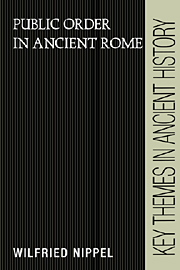4 - Features of the new Imperial order
Published online by Cambridge University Press: 24 December 2009
Summary
THE CITY OF ROME
For Augustus, restoring political and social order meant integrating the relevant social groups. Whereas the senators were won over by the so-called restoration of the Republic, the plebs urbana had to be approached in ways which demonstrated the emperor's concern for both their material and their cultural demands.
The emperor and his people
The most important issue was, of course, the capital's corn supply. The people's demand for a stable supply guaranteed by the ruler himself could not be ignored, and in 22 BC Augustus took the opportunity of a famine both to accept the cura annonae, which in 43 had been abolished as unconstitutional (Dio Cass. 46.39.3), and to reject the dictatorship that the people were pressing on him (Dio Cass. 54.1.1–5; Suet. Aug. 52; Vell. Pat. 2.89.5; Res gestae 5). Thereafter the corn supply remained the responsibility of the emperor (see Tac. Ann. 3.54.4–5), symbolizing his role as the great patron of the plebs frumentaria. Those registered for the corn distribution were also entitled to receive occasional gifts of money; not necessarily the very poor, they tended to represent a relatively well-off segment (Van Berchem 1939; Nicolet 1985: 828–33; Virlouvet 1991). The living conditions of the urban population were, furthermore, considerably improved by measures regulating the water supply, sewers, maintenance of the banks of the Tiber, public works, etc., for which services a number of boards headed by senior senators were established (Ramage 1983; Scobie 1986; Schneider 1986; Bruun 1991; Robinson 1992).
- Type
- Chapter
- Information
- Public Order in Ancient Rome , pp. 85 - 112Publisher: Cambridge University PressPrint publication year: 1995

